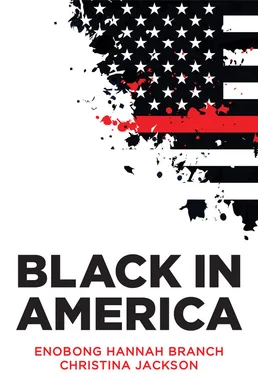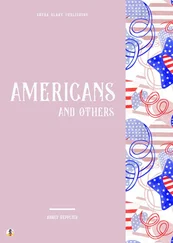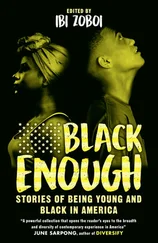Chapter 5, “Who Gets to Work? Understanding the Black Labor Market Experience,” emphasizes how race structures access to occupational opportunity that marginalizes Blacks in the labor market. In a meritocratic society, access to opportunity should be granted based on how hard a person works, and hard work should lead to economic rewards. This has not been true in America. Occupational opportunities were withheld from Blacks and extended to Whites. Blacks and Whites, men and women, when working alongside one another or in related jobs were compensated unequally because of their race and/or gender. Racism helped manage the dissonance between American ideals of equality and Black exclusion, ideologically and legally justifying the differential treatment of Blacks in the labor market until the Civil Rights Movement. There were some gains afforded by affirmative action, followed by losses as federal interest in enforcement waned. This chapter takes the reader on a journey to understand the context of historically unequal opportunity and the contemporary forces driving socioeconomic inequality today.
Chapter 6, “Is Justice Blind? Race and the Rise of Mass Incarceration” (with Lucius Couloute), examines the historical pathologization of Black bodies, placing it within a larger system of inequality and race-making. It begins first with the state of mass criminalization today, exploring the product of what Michelle Alexander (2010) calls “the new Jim Crow.” With millions of Black bodies under criminal justice system control, the chapter asks: How did we get here? The answer lies in the immediate post-emancipation period as social scientists, politicians, wealthy landowners and big business worked to create a system that reinforced racial inequality amid racial flux. We then examine shifting twentieth-century practices and policies grounded in – by then pervasive – racist ideas that governed the growth of our criminal justice system. The chapter then ends where it started, the contemporary period, this time examining the effects of criminalizing Black bodies and the reproduction of racial inequality in newer practices and policies.
Chapter 7, “Reifying the Problem: Racism and the Persistence of the Color Line in American Politics” (with Emmanuel Adero), provides an examination of the role of politics and policy in creating and driving the persistence of racial inequality. It outlines the politics of retrenchment after emancipation, which led to a split between Northern and Southern Democrats and the emergence of the Southern strategy, which appealed to the racism against Blacks held by Southern White voters. We then draw on the similarities between the Democratic and Republican parties and how racial appeals have shaped presidential politics and policies. While Blacks are a base to be catered to and at times courted by one party and antagonized by the other, both have played a definite role in the persistence of Black marginality. Finally, we outline policy as the outcome of racial politics. Though policies are seemingly race-neutral, their disparate impact on the Black community is well documented.
We want you to get the most out of this book and have included the features below as additional resources.
Key terms are bolded throughout and compiled in a glossary.
Integrated into each chapter is a stand-alone feature called “Spotlight on Resistance” that highlights a contemporary or historical example of Black people asserting themselves and resisting racial oppression.
At the end of each chapter, there are critical questions to promote engagement and reflection.
1 * Where a term or concept is highlighted in bold in the text, you will find it defined in the Glossary at the end of the book.
2 1. www.merriam-webster.com/dictionary/post-racial.
3 2. www.archives.gov/files/press/exhibits/dream-speech.pdf.
4 3. context.newamerica.org/there-is-the-south-then-there-is-mississippi-6cb154ee3843.
1 How Blacks Became the Problem: American Racism and the Fight for Equality
To be Black in America today is to exist among a myriad of contradictions, but there is none more striking and uniquely American than the adherence to the ideal of equality, and its sister meritocracy, alongside pervasive racial inequality. Slavery birthed this contradiction. As slaves, Blacks were the solution to America’s labor problem, marked by race for unequal treatment. They were forcibly brought to the United States for the sole purpose of serving as an intergenerationally stable, coercible labor force (Branch 2011). Their racial otherness enabled the brutality that American slavery required (Fredrickson 2002). Black slaves were bought, sold and traded like cattle. “Auctions were government sponsored events taking place on courthouse steps” (Roberts 1997:35). The slave trade was a permanent legal part of the foundation of America.
Slavery normalized the objectification and dehumanization of Blacks, and the Constitution legislated this. The “three-fifths” compromise was the resolution to one of the most contentious issues facing the framers of the Constitution. Supporters of slavery, often slaveholders in Southern states, wanted slaves to be counted as part of the United States population for purposes of taxation and representation. Opponents of slavery, often Northern delegates, only wanted to count the free population, including free Blacks and indentured servants, discounting slaves as property, not people. Historians John Hope Franklin and Evelyn Brooks Higginbotham recount the tensions among delegates at the 1787 Constitutional Convention in Philadelphia, with competing interests as follows:
Most of the Northern delegates could regard slaves in no light except as property and thus not entitled to any representation. However, delegates from Georgia and South Carolina – states where the majority of people were slaves and the free White people a distinct minority – vigorously demanded that slaves be counted equally with Whites when it came to apportioning congressional seats and electoral votes. Gouverneur Morris declared that the people of his state, Pennsylvania, would revolt against being placed on an equal footing with slaves, while Rufus King of Massachusetts flayed slavery in a fiery speech and condemned any proposal that would recognize it in the Constitution. (2011:100)
It was against this backdrop that the now notorious “three-fifths” compromise was forged; it read: “Representatives and direct taxes shall be apportioned among the several States which may be included within this Union, according to their respective Numbers, which shall be determined by adding the whole Number of free Persons, including those bound to Service for a Term of Years, and excluding Indians not taxed, three-fifths of all other persons.” 1Counting slaves equally alongside the free population would have given the South much greater political power due to the size of the enslaved Black population. But how to count slaves for the purpose of taxation and representation was not the only issue pertaining to slavery facing the framers of the Constitution. A pressing question was what to do about the slave trade itself?
In 1787, several Northern states had already banned the importation of new slaves, but the Southern states that allowed it, Georgia as well as South and North Carolina, were adamant in their resistance to outlawing the slave trade. Despite the loud objections to slavery and the rising abolitionist movement, slavery was too important to the fledgling American nation to be abolished or the slave trade prohibited at that time. Instead the framers of the Constitution compromised again, granting Congress the right to ban the slave trade but not for 20 years. American participation in the transatlantic slave trade officially ended on January 1, 1808. Yet slave trading persisted illicitly for many years thereafter.
Читать дальше












